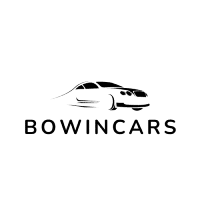Bowincars
News
Quelle est l’influence des nouvelles technologies sur le design des motos ?
janvier 19, 2024
Dans l’univers de la moto, la technologie et le design sont deux éléments indissociables. En effet, l’innovation technologique a toujours été le principal moteur de...
Moto
Personnalisation d’une Triumph Scrambler pour un look vintage authentique
janvier 19, 2024
Mesdames, Messieurs, préparez-vous à un voyage dans le temps. Aujourd’hui, nous allons découvrir ensemble comment personnaliser une Triumph Scrambler à l’image des légendaires motos d’antan....
Techniques pour améliorer le confort de pilotage d’une Yamaha Tenere en off-road
janvier 19, 2024
La Yamaha Tenere est une moto qui a fait ses preuves sur tous les terrains. Connue pour sa robustesse et sa capacité à affronter les...
Produits
Securité
Sécurité des véhicules tout-terrain : équipements spéciaux et précautions
janvier 19, 2024
La sécurité sur la route est une préoccupation de tous les instants. Avec les progrès technologiques, les constructeurs de véhicules rivalisent d’ingéniosité pour proposer des...
Voiture
Comment optimiser les performances de la Volkswagen Passat en milieu urbain ?
janvier 19, 2024
La Volkswagen Passat, c’est le véhicule qui a su allier performance et robustesse pour une expérience de conduite inégalée en milieu urbain. Véhicule phare de...
Comment maximiser la durabilité du moteur de la Hyundai Tucson ?
janvier 19, 2024
Dans l’univers automobile contemporain, un nom fait l’unanimité parmi les experts : la Hyundai Tucson. Ce véhicule allie à la fois performance et élégance, le...
Quels systèmes de sécurité sont indispensables pour la BMW i3 ?
janvier 19, 2024
Comme un violoniste virtuose qui caresse les cordes de son instrument pour créer une symphonie, BMW a sculpté la dernière version de sa voiture électrique,...
Comment améliorer l’efficacité énergétique de la Chevrolet Bolt ?
janvier 19, 2024
La Chevrolet Bolt, qui se trouve être une des voitures électriques les plus populaires sur le marché, est connue pour sa grande autonomie. Cependant, l’autonomie...
Quelles modifications esthétiques sont recommandées pour la Honda HR-V ?
janvier 19, 2024
Ah, la Honda HR-V ! Voiture compacte, versatile et esthétiquement agréable. Mais comme pour tout objet précieux, la tentation de la personnaliser à notre image...
Comment choisir les pneus été idéaux pour la Skoda Superb ?
janvier 19, 2024
Le choix de pneus été pour votre Skoda Superb peut sembler être un véritable casse-tête pour certains, et pourtant, c’est l’une des étapes clés pour...
Copyright 2024.
